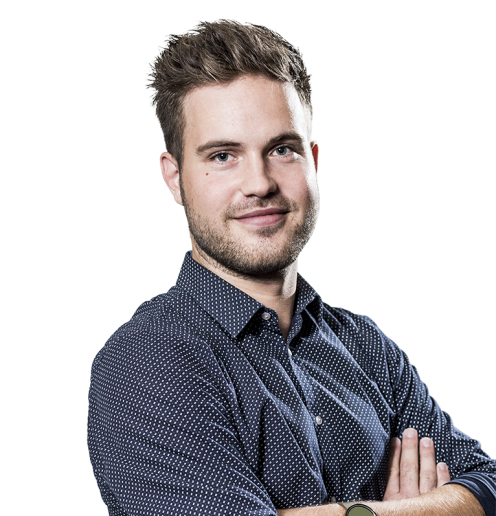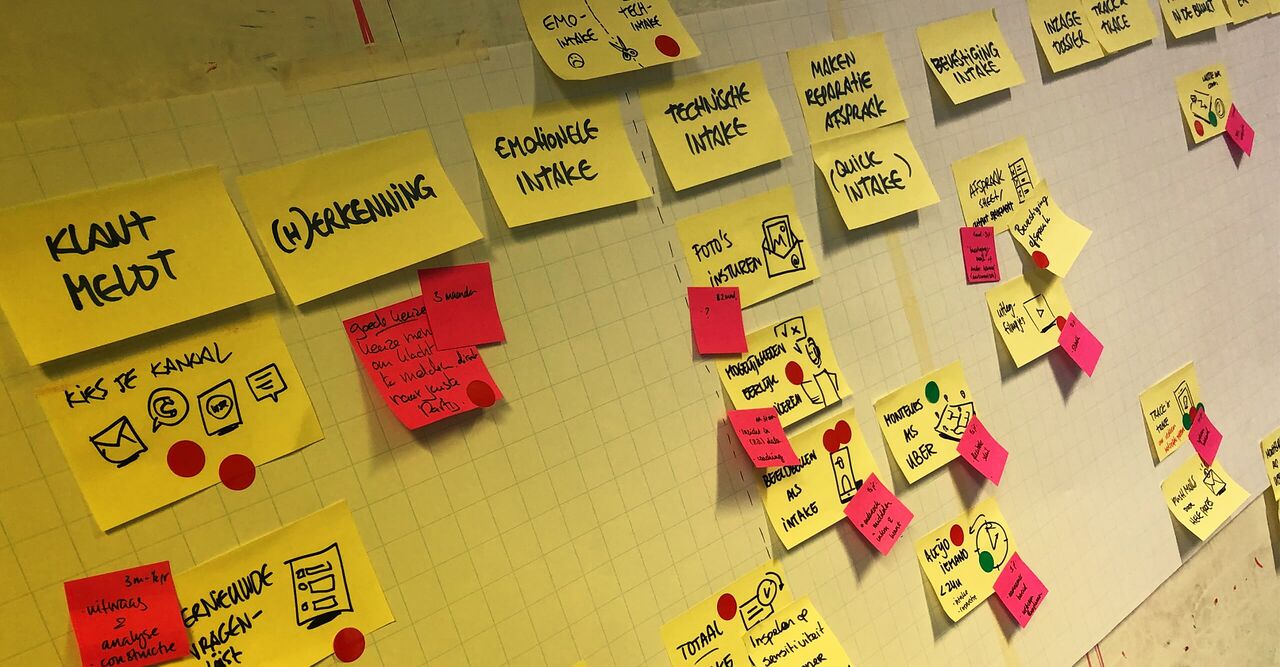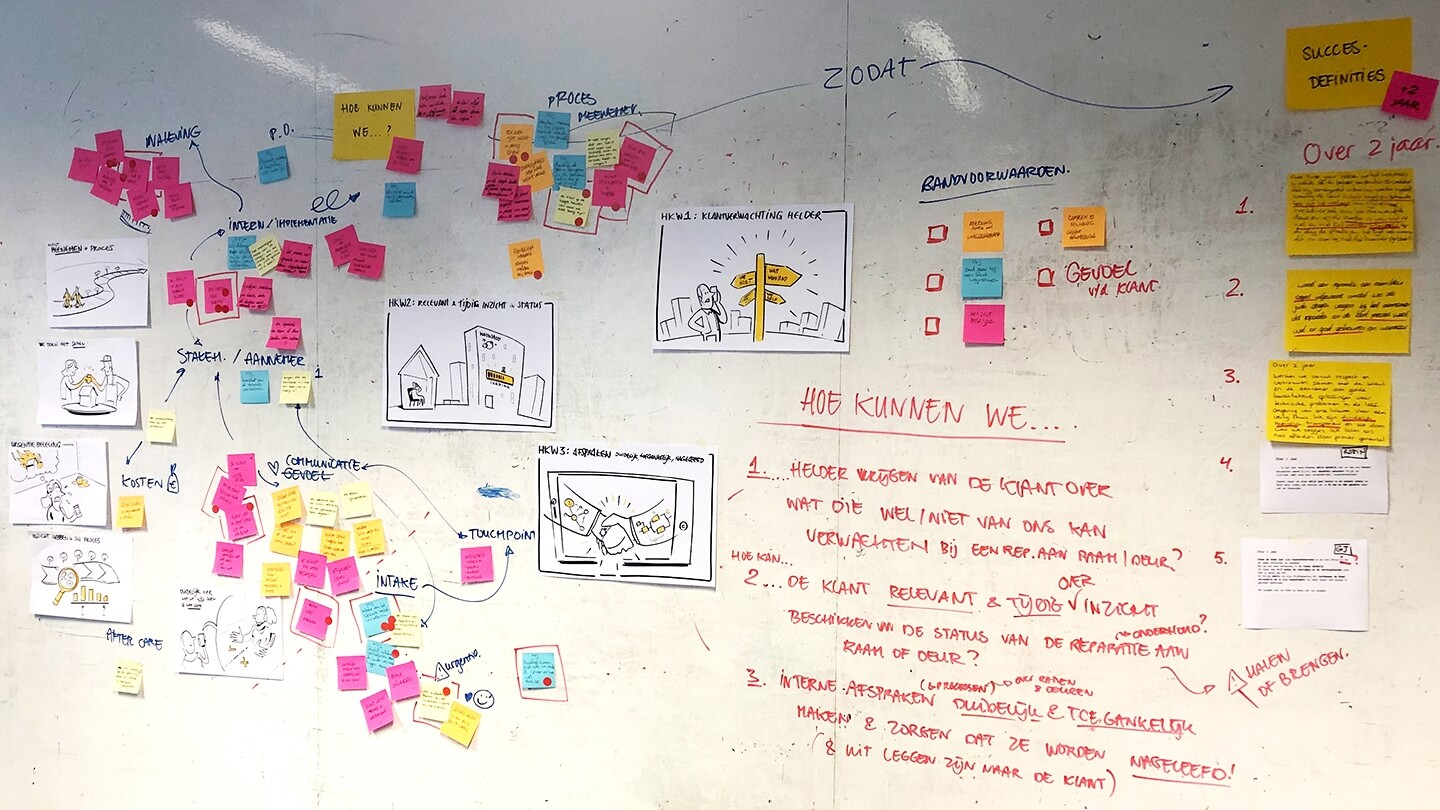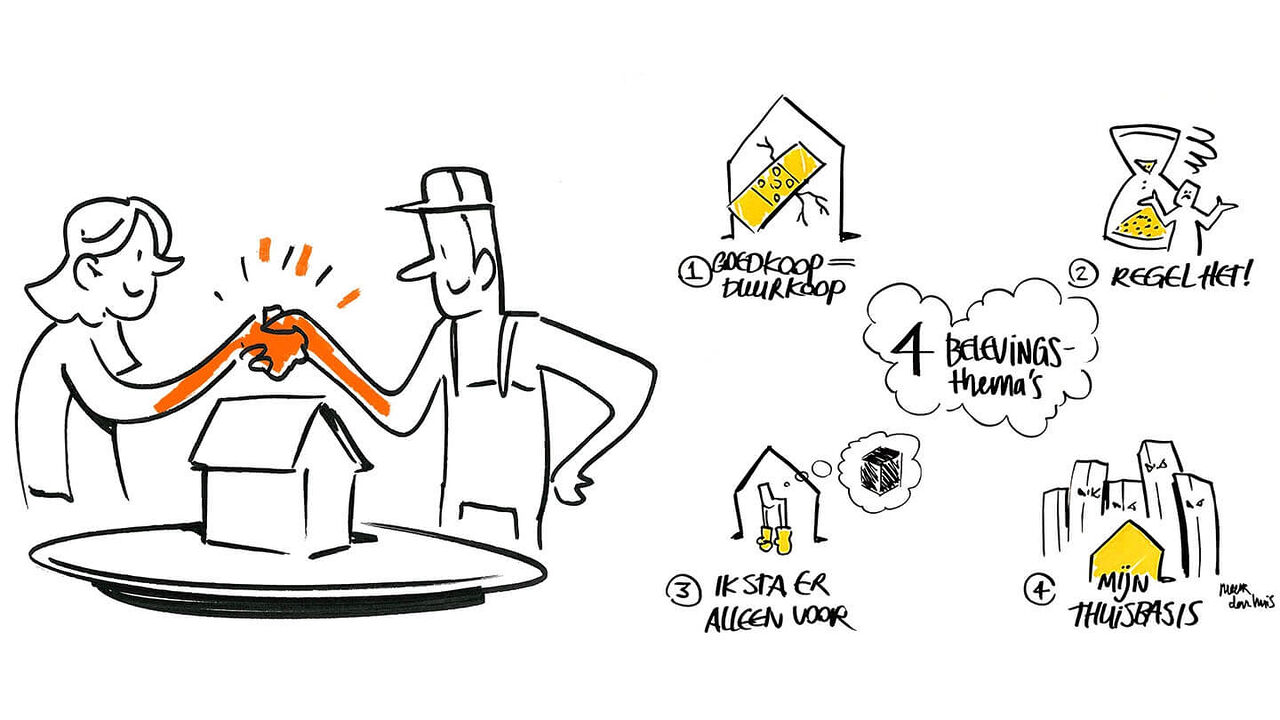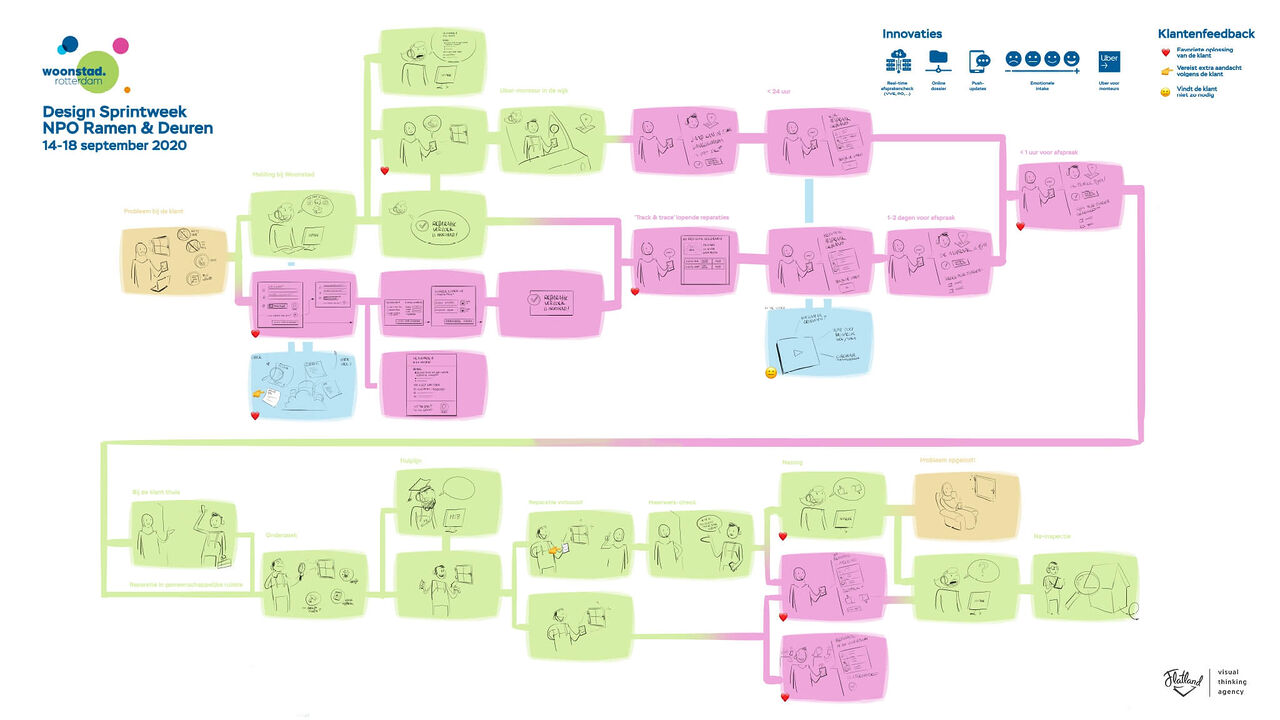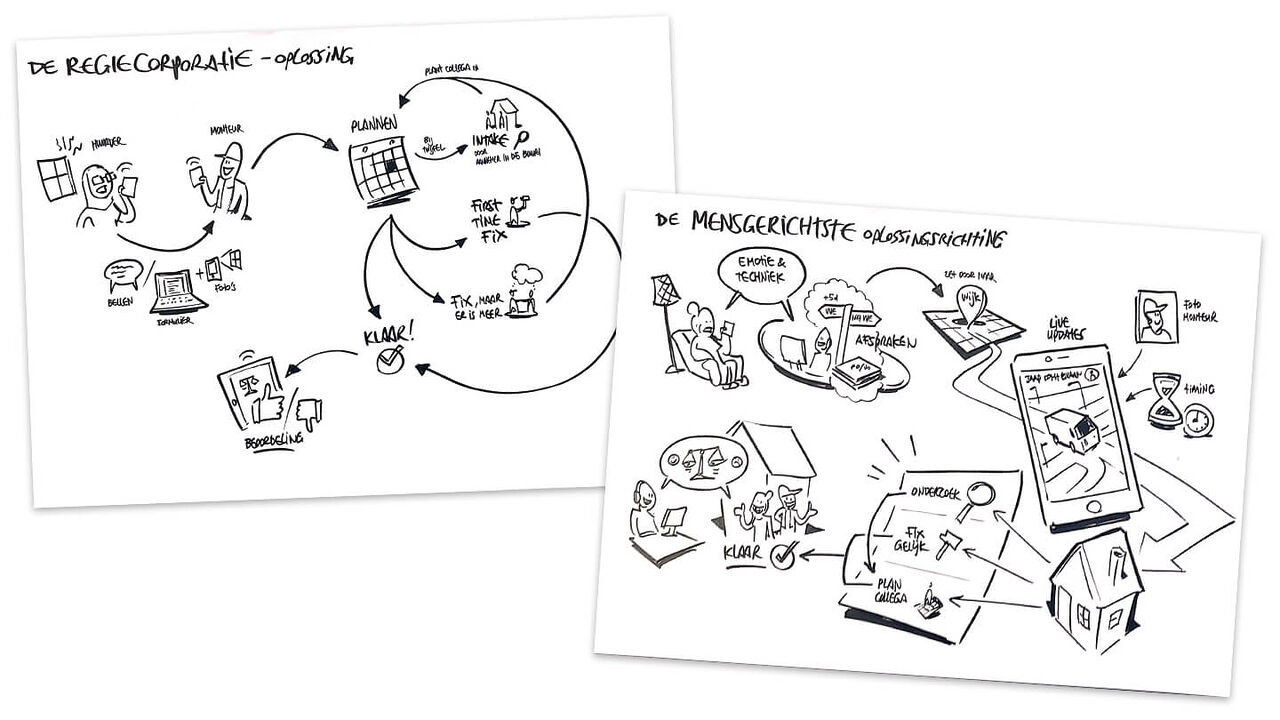Optimising customer process at housing corporation Woonstad Rotterdam
The question
Woonstad believes that every Rotterdammer deserves a nice place to live and pays a lot of attention to its customers. The organisation sets firm ambitions: the current customer satisfaction rating is already high (a 7.7), but it should become at least a 9.
The housing association is continuously improving its customer service and internal work processes, but came to Flatland for help to make bigger strides quickly. Where can we really make a difference?
This is how we tackled it
The solution: sprint week with multidisciplinary core team
Flatland organised and designed a sprint week: for five days, a core team from Woonstad locked themselves in Flatland’s office. From Monday to Friday, they worked in a pressure cooker on comprehensive problem analysis, gathering new ideas, making responsible choices, designing a prototype and extensive testing.
The core team consisted of employees from different departments: contractor, technical service, customer service, management. And during some parts, other employees with different and complementary expertise and competences were invited. Working together in co-creation for an integrated approach to a concrete problem.
The most common problems
During the sprint week, we tackled a common problem: broken windows and doors. A window does not close perfectly, a door sticks or a lock is broken. A tricky process because it involves many internal parties: the customer contact centre, the technical office, planned maintenance and the contractor. And a problem that residents who call Woonstad have to deal with the most.
How is the whole process from first contact to solving the problem? What steps are taken now, how do customers experience it and what can we improve? In other words: how can we organise the customer journey of the repair process in a contemporary and optimal way?
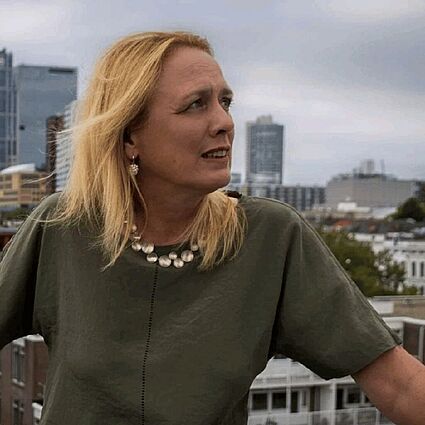
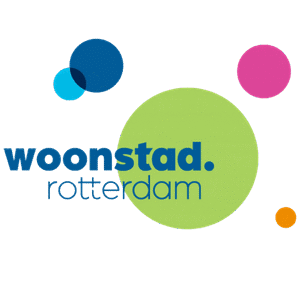
“Because of the integrated approach, everyone is involved and it really is supported by everyone!”
Development of a clickable storyboard
After a customer survey by Altuition and a presentation by Koos Service Design, many ideas for improvements emerged. These were categorised into three directions: technical, people-focused and corporation-focused. Which direction is the most promising, on the scale between impact and effort?
Together, we developed a clickable storyboard. This way, we mapped out the ideal process, and let clients test it beforehand, without having to implement it in full. Visual thinking helped to achieve results quickly. This approach generates lots of ideas, speeds up thinking and helps to summarise more quickly.
User validation: testing with own customers
Customer perceptions were the leitmotif of the sprint week. How urgent is something for a customer, how does he or she experience it? What is ‘ordinary work’ for a service worker has a whole different emotional charge for customers (the tenants). Because living is emotional: it’s about a sense of home, about a place of your own.
Assumptions are often made when a target group analysis or customer journey is made. But we wanted a real, realistic picture of the tenants, so they were brought in. A few Woonstad tenants, who had once lodged a complaint, were invited to join the discussion. (And that too showed that housing has a big emotional charge, as some tears even flowed during an interview). Prototyping the entire repair process proved to be a great success, as this is how you make the process of customer experience transparent in advance.
The result
The result of an integrated approach
The improvements are carried by the entire organisation, all departments. Because “when we act together, quality goes up and costs go down!”, says Robin van Koppen, head of the customer contact centre. “Because of this integrated approach, everyone is involved and it is really supported by everyone!”, also says Jenny Vermeeren, director at Woonstad.
The result? A new way of working that generated a lot of energy, a form of cooperation that ensured an integral and widely supported approach, as well as a work process that could be directly and concretely improved. Testing and validation by Woonstad customers was the biggest success: the improved customer journey could be applied immediately.
The impact of visual thinking
Constantly drawing Flatland’s William along had many advantages: not only to support the conversations and to capture the discussions, but it helps to summarise more quickly. A drawing explains much better what is being talked about, because so much information is hidden in one picture. And afterwards, we again had something visual and tangible to review later.
At each step, we had a tangible result in our hands. All the drawings remained hanging in the room all week, so we kept all the thinking steps visible. “You arrive at a lot of ideas very quickly because of this. A huge amount of output was generated!” says Vermeeren.
Want to know more about deploying a sprint week?
Or discover what we can do for your organisation? Get in touch with Tom!
ContactVisual Consultant
